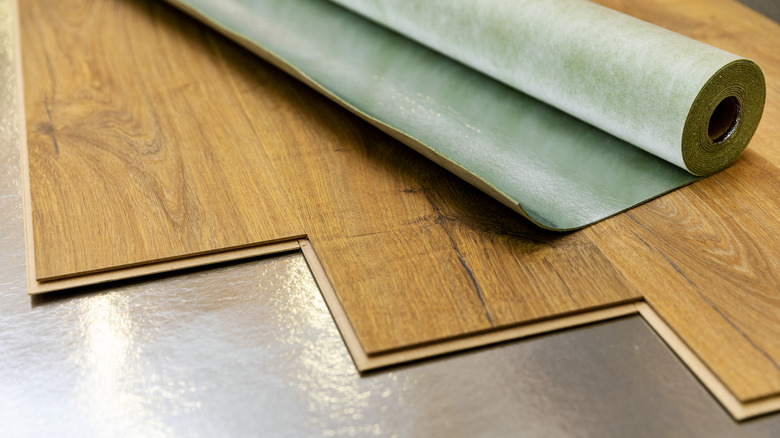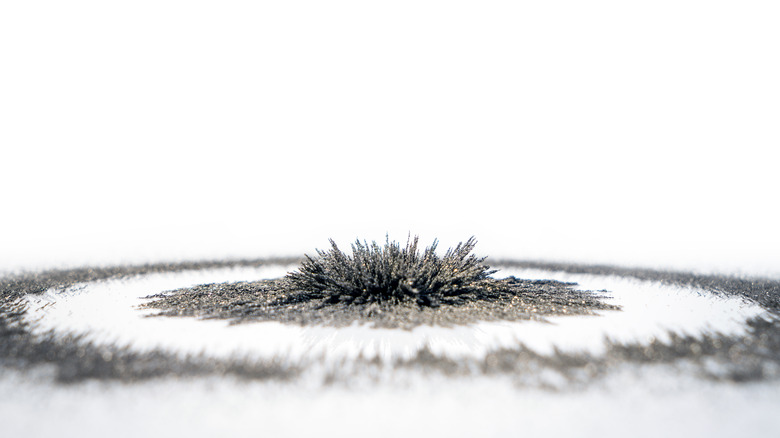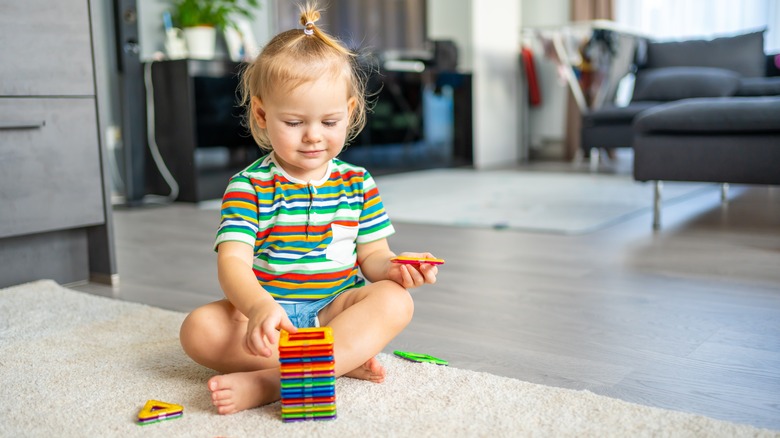What Is Magnetic Flooring?
Ceramic tile flooring has been with us for 6,000 years, hardwood floors for 400 years, and we've even had laminate since the 1970s, according to Elle Decor. And now it is time for the next step in durable, modular, fashionable, and sustainable flooring — magnets. As the name suggests, magnetic flooring uses mainly magnets rather than glue, nails, or any other such adhesive mechanism, to stick the flooring surface to the underfloor of your home. This is achieved using a special attractor underlayment, according to FlooringStores.
Interior designers and homeowners are only beginning to tap into a wide range of benefits of this new flooring technology. The simplicity of the solution means that almost any kind of flooring is convertible to magnetic flooring. This has made the idea very attractive to retail customers at this stage, per This Week in FM, as the lack of grouting, glue or other substances means that the floor becomes almost endlessly interchangeable and recyclable depending on client requests. Especially as pop-up spaces become a more significant part of doing business, flooring flexibility is crucial for retail spaces.
But magnetic flooring has the potential to revolutionize how we floor our homes as well — scroll down for an in-depth discussion of how it works and what magnetic flooring can do for your home.
How magnetic flooring works
Magnetic flooring is made of two parts — the floorboards, which either have trace amounts of iron throughout, painted on, or attached via magnetic plates underneath, and the underlayment, which is a sheet of material that insulates the floorboards from the bare concrete of the underfloor. This underlayment is also especially inoculated with iron particles, and the two opposing charges of the layers are what create the magnetic attraction.
The underlayment is also tacky in the way that some fridge magnets are — not wet and sticky, but plastic with a grip to it. The combined effect of the magnetic attraction between the layers, the slight adhesion of the tacky surface, and the grid of other floorboards within which each individual is held tight means that the floorboards are held in place without glues or mortar, per Treehugger.
So, the first step to installing a magnetic underlayment is to cut out enough cloth to cover your floor. Currently, all available versions of this underlayment are non-porous, so be certain that they won't create drainage issues. Tape up any gaps in the backing, then renovators can simply lay the magnetized flooring tiles on top, per Georgia Carpet Industries. They will latch together and onto the cloth beneath, forming a professional-looking floor with zero tools, technical skills, or toxic chemicals. As long as the flooring surface you're using doesn't need any further treatments, it's ready to walk on once it is covered!
The potential benefits of magnetic flooring
The major benefit of magnetic flooring is that it is uncomplicated, as described by Floor Daily. The savings far outweigh the cost increase of the new technology in labor and other materials for the average DIYer. It's also relatively forgiving compared to traditional floor installations, where correcting beginner mistakes can be dishearteningly costly due to the materials and time invested. Magnetic flooring is also easy to pull up, adjust and re-lay until it's right, and according to Bathgate Flooring, installation times are still reduced by around 80%.
Furthermore, an article published in the IEEE Transactions on Magnetics showed that the levels of magnetism in magnetic floors were safe for electronic devices and people with pacemakers; therefore, these weak floor magnets are safe for kids, pets, or elderly people. The same cannot be said for every chemical that goes into sticking down vinyl or laminate floors! Moreover, the potential for reusing magnetic floorboards rather than ripping them up is fundamentally in accordance with environmental principles, as IOBAC explained.
Combining endless design options, environmental bona fides, low health impact, and potentially revolutionary ease of installation, it seems that the future of flooring may well be magnetic.


